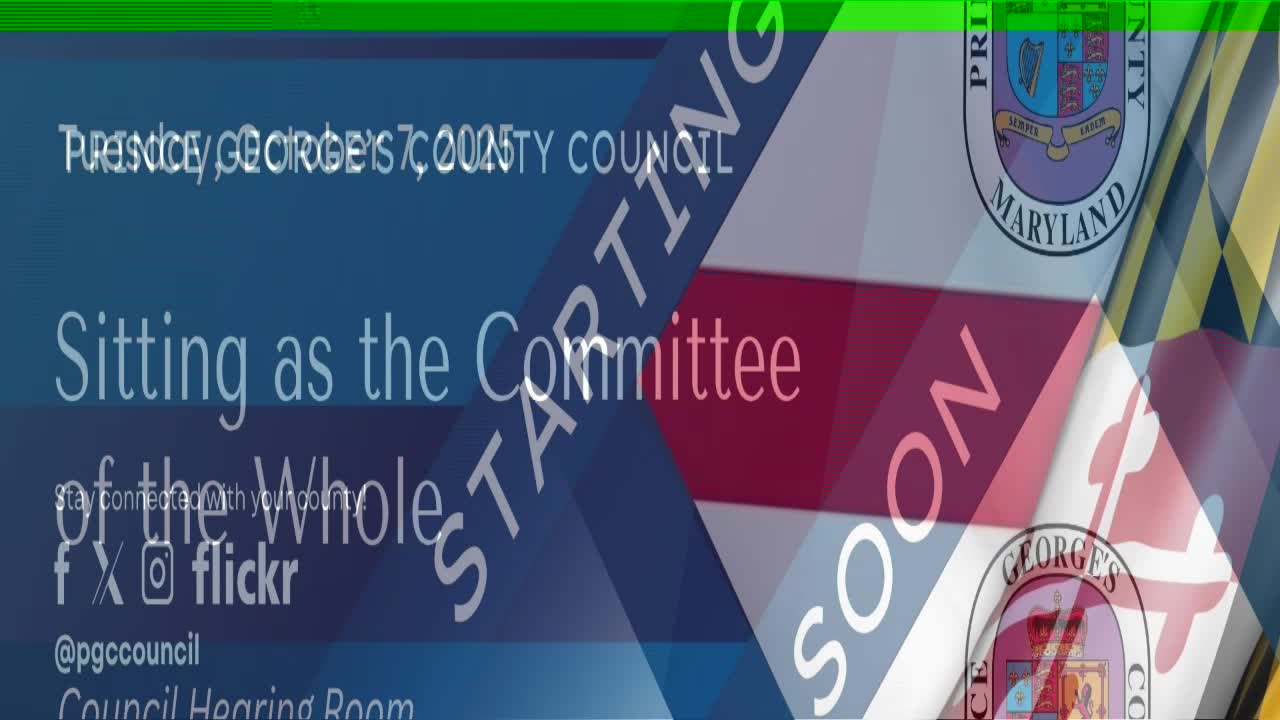Prince George's County Council Hears Opposition to CB 92 Over Land Development Transparency
October 07, 2025 | Prince George's County, Maryland
This article was created by AI summarizing key points discussed. AI makes mistakes, so for full details and context, please refer to the video of the full meeting. Please report any errors so we can fix them. Report an error »

Prince George's County is taking significant steps toward revitalizing its urban landscape with the introduction of a new bill aimed at regulating land subdivision within the flagship project overlay zone. During the Committee of the Whole meeting on October 7, 2025, council members discussed the transformative potential of this initiative, which is designed to facilitate redevelopment of key sites across the county.
The bill, identified as CB 92, seeks to streamline the process for land subdivision, thereby encouraging investment and development in areas identified as signature sites. This move is expected to enhance the county's economic growth and improve community infrastructure. Councilman Adam Stafford, who chaired the meeting in the absence of Councilwoman Blaguey, emphasized the importance of this legislation in shaping the future of Prince George's County.
Staff member Miss Hightower provided an overview of the bill, highlighting its role in promoting sustainable development and ensuring that the county can effectively manage its growth. The discussions underscored a commitment to creating a more vibrant and accessible community through strategic planning and development.
In addition to the flagship project overlay zone, the meeting included other discussions, though the primary focus remained on the implications of CB 92. The council's proactive approach signals a dedication to fostering an environment conducive to innovation and revitalization.
As Prince George's County moves forward with this legislation, residents can anticipate a more dynamic urban landscape that prioritizes both economic opportunity and community well-being. The next steps will involve further deliberations and potential adjustments to ensure the bill meets the needs of all stakeholders involved.
The bill, identified as CB 92, seeks to streamline the process for land subdivision, thereby encouraging investment and development in areas identified as signature sites. This move is expected to enhance the county's economic growth and improve community infrastructure. Councilman Adam Stafford, who chaired the meeting in the absence of Councilwoman Blaguey, emphasized the importance of this legislation in shaping the future of Prince George's County.
Staff member Miss Hightower provided an overview of the bill, highlighting its role in promoting sustainable development and ensuring that the county can effectively manage its growth. The discussions underscored a commitment to creating a more vibrant and accessible community through strategic planning and development.
In addition to the flagship project overlay zone, the meeting included other discussions, though the primary focus remained on the implications of CB 92. The council's proactive approach signals a dedication to fostering an environment conducive to innovation and revitalization.
As Prince George's County moves forward with this legislation, residents can anticipate a more dynamic urban landscape that prioritizes both economic opportunity and community well-being. The next steps will involve further deliberations and potential adjustments to ensure the bill meets the needs of all stakeholders involved.
View full meeting
This article is based on a recent meeting—watch the full video and explore the complete transcript for deeper insights into the discussion.
View full meeting
